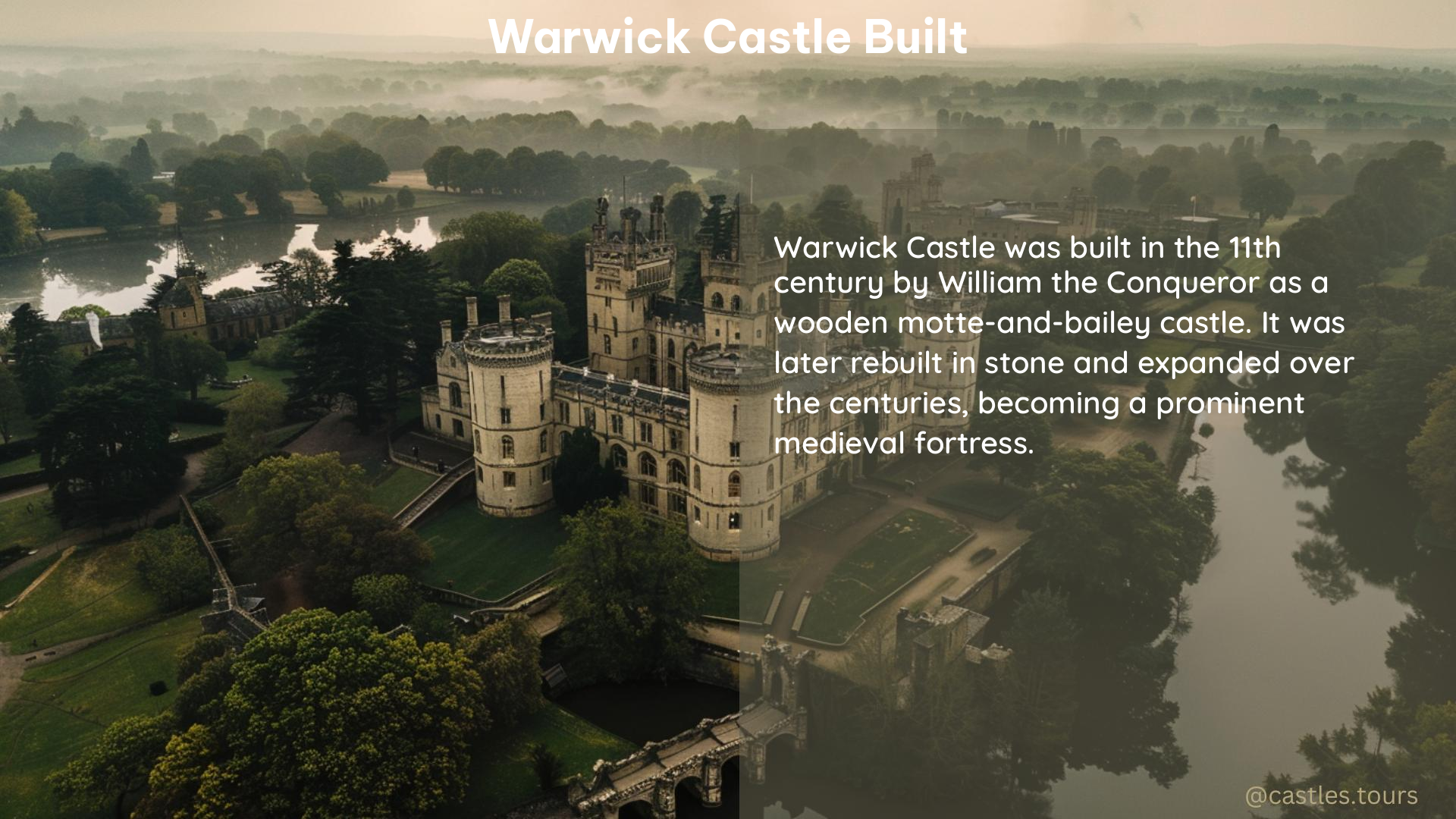Warwick Castle, a medieval marvel nestled in the heart of Warwickshire, England, has stood the test of time for over 950 years. Built by William the Conqueror in 1068, this iconic fortress has witnessed the ebb and flow of history, from the Wars of the Roses to the English Civil War. Join us as we explore the rich tapestry of this remarkable castle and uncover the fascinating stories that have shaped its legacy.
The Beginnings of Warwick Castle
Warwick Castle was originally constructed as a wooden motte-and-bailey castle, a common defensive structure in the aftermath of the Norman Conquest. William the Conqueror, the victorious Norman king, recognized the strategic importance of the site, which commanded the River Avon and aided in his efforts to solidify his control over England.
Over the centuries, the castle underwent a remarkable transformation, with the wooden structure being replaced by a formidable stone fortress in the 12th century. This transition marked the beginning of Warwick Castle’s evolution into one of the most recognizable examples of 14th-century military architecture.
The Families that Shaped Warwick Castle

Warwick Castle has been owned by five prominent families in English history: the Beaumonts, Beauchamps, Nevilles, Dudleys, and Grevilles. Each of these families left an indelible mark on the castle, shaping its appearance and influencing the course of its history.
The Beaumonts, who held the castle in the 11th century, were the first to leave their imprint on the site. The Beauchamps, who succeeded them in the 12th century, were responsible for the castle’s transition to a stone structure, further strengthening its defensive capabilities.
The Nevilles, who acquired the castle in the 15th century, were embroiled in the Wars of the Roses, with the infamous Richard Neville, Earl of Warwick, playing a pivotal role in the conflict. The Dudleys, who followed in the 16th century, were at the center of the tumultuous events surrounding the ill-fated reign of Lady Jane Grey.
Finally, the Grevilles, who became the Earls of Warwick in 1759, transformed the castle from a fortification into a grand country house, ushering in a new era of Warwick Castle’s history.
Architectural Highlights and Unique Features
Warwick Castle boasts a wealth of architectural marvels that have stood the test of time. The castle’s most recognizable feature is the facade opposite the town, which was refortified during the Hundred Years War, resulting in one of the most iconic examples of 14th-century military architecture.
The castle’s impressive towers, including the iconic Caesar’s Tower and Guy’s Tower, are a testament to the engineering prowess of their builders. These towering structures not only served as defensive outposts but also provided luxurious living quarters for the castle’s noble residents.
One of the castle’s unique features is the Warwick Vaults, a network of underground passages and chambers that were used for storage, defense, and even as a prison. Visitors can explore these atmospheric spaces and imagine the lives of those who once walked these corridors.
Warwick Castle Today: A Thriving Tourist Attraction
Today, Warwick Castle is a thriving tourist attraction, owned and managed by Merlin Entertainments. The castle has been carefully preserved as a Scheduled Ancient Monument and a Grade I listed building, ensuring that its rich history and architectural splendor are protected for generations to come.
Visitors to Warwick Castle can immerse themselves in a wide range of activities and experiences, from guided tours of the castle’s interiors and grounds to interactive displays and live-action shows. The castle also offers unique accommodation options, such as medieval glamping and themed lodges, allowing visitors to truly step back in time.
Whether you’re a history enthusiast, a lover of architecture, or simply seeking a captivating day out, Warwick Castle promises to transport you to a bygone era, where the echoes of the past whisper through the ancient stones.
Conclusion
Warwick Castle stands as a testament to the enduring power of human ingenuity and the resilience of our shared heritage. From its humble beginnings as a wooden motte-and-bailey castle to its current status as a beloved tourist destination, this remarkable fortress has weathered the storms of history, emerging as a symbol of England’s rich cultural tapestry.
As you explore the castle’s halls and towers, let your imagination soar, conjuring the ghosts of the past and the stories they have to tell. Warwick Castle is not just a relic of a bygone era; it is a living, breathing embodiment of the human spirit, a place where the past and present converge to create a truly unforgettable experience.
